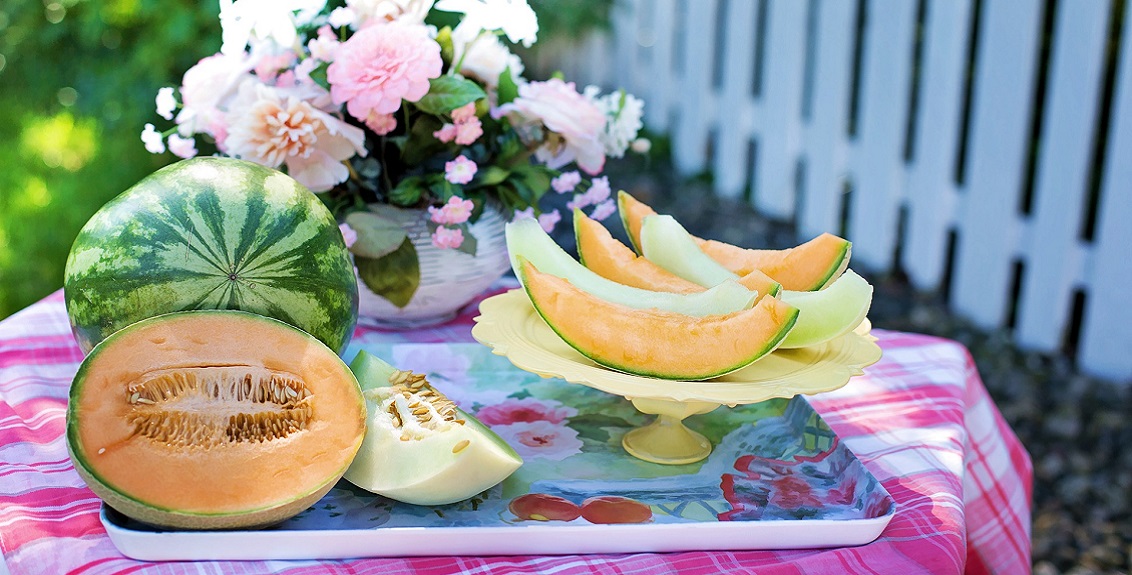Melons are closely related to cucumbers and need similar growing conditions. You need to give them warmth, water and food. It is a good idea to get your seeds going indoors so you can get a head start. Melons have delicate roots, so you will want to make your transplanting as easy as possible later. Start your seeds in paper or other compost-able pots so that you don’t damage the seedlings at planting time.
- Sow two seeds per pot of seed compost in a 9cm pot. Water well, and then place the pots in a propagator at a temperature of at least 18°C (65°F). Keep the propagator in a well-lit position.
- After germination, remove the weaker of the two seedlings and keep the compost moist but not too wet.
- After the first true leaves have emerged, reduce the temperature in the propagator to a minimum temperature of 15°C (59°F).
- Plant out into 30cm pots in late spring to early summer. Fill the pot with potting compost and carefully plant the melon in the centre. Pinch out the main growing point to two or three buds, to encourage side shoots to develop. Add a plant support, such as a bamboo cane, and water well.
Melons are easy to grow outdoors as they will scramble across the planting bed, a better use of space in the greenhouse to grow them up supports. If you do this you will really need to support each individual melon and this film shows you a simple way to do this.
- As the plants establish, keep tying the long main stem to a plant support.
- Keep the compost moist at all times, which will mean checking the plants every day.
- Start to add a liquid feed once a week to encourage strong growth.
- To prevent the plant from becoming too crowded, pinch off side shoots after three or four leaves, on a weekly basis.
- Melons produce both male and female flowers. The female flower has a fruit developing behind the bloom whereas the male flower has a thin stalk. Insects normally pollinate the flowers, but in a greenhouse, you may need to hand-pollinate them. First identify the female and male flowers, looking for the fruit behind the female and the thin stalk behind the male.
- Choose a warm, sunny day when the flowers are fully open. Pick a healthy male flower and remove its petals to expose the inside of the bloom where the pollen is produced. Gently move the male flower into the fully open female bloom, which allows the pollen from the male anthers to transfer on to the female stigma.
- Thin out developing fruits, allowing just four melons to grow per pot-grown plant.
- As the fruits develop water well and feed with a high potash liquid feed.

Support heavy fruits with a pair of tights, or netting such as the net bags you buy oranges in. As the fruits ripen they will give off a sweet aroma and will soften at the end opposite the stalk. The skin may also change colour. Finally, small cracks will develop on the fruit around the stalk, which means it’s time to pick.
